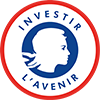What is a rare disease ?
A disease or disorder is defined as rare in Europe when it affects less than 1 in 2000.
Over 7,000 rare diseases are now described, meaning that 3 million people are affected in France. This number is between 27 and 36 million people in Europe, affecting between 6 and 8% of the population in his life.
- 80% of rare diseases have identified genetic origins, mostly with a single gene involved. The genes responsible have been identified in approximately 45% of these disorders, suggesting there are 4000 to be discovered. For rare genetic diseases for which a gene has been identified, the function and pathophysiology are commonly poorly understood, thus limiting development of appropriate therapeutics.
- Others are the result of infections (bacterial or viral), allergies and environmental causes, or are degenerative and proliferative.
- 50% of rare diseases affect children.
- Rare diseases are usually severe, chronic, debilitating and often life-threatening.
- For most rare diseases, there is currently no treatment, and many challenges remain.
- Currently, patients must often face the disease with, at best, treatments against the symptoms.
All the page content is based on the following ressources : Rare Disease Day's web site, the last report from the European Union Committee of Experts on Rare Diseases (EUCERD)
 European Report 2014 (2.6 MB)
European Report 2014 (2.6 MB)
PHENOMIN supports biomedical research on rare diseases
Since 2009, when the global research community started to apply modern genomics to rare disease research, scientists’ ability to identify the causative genes of diseases has increased exponentially. The genes of some 3 500–4 000 diseases are still unknown, but 5 to 10 of these new genes are found almost every week. Medical research is being transformed. Since 80% of rare disease are genetics, the mouse model became crucial in fundamental research for understanding rare diseases.
Given the low number of people with (Less than 1/2000 patient in Europe), few studies have conducted by lack of staff significant. Rare diseases (including neuromuscular, metabolic, infectious, autoimmune, and cancer susceptibility), are generally serious and disabling in 65% known cases. The vast majority are also orphaned, which is to say that there is no therapeutic treatment. Mouse models for these disorders are triply useful. Firstly, the models are useful for decrypting the mechanisms behind of the specific disease. Secondly, a platform for testing therapies, as illustrated by recent work published by Françoise Muscatelli’s team at the Institute of Neurobiology Mediterranean (Inmed, Marseille) with respect to the
Prader Willi Syndrome, one of our oldest scientific collaborations. Finally, research into rare diseases can benefit research into common sporadic disorders like obesity and cardiovascular diseases, including strokes and heart attacks. Ongoing work with families affected by rare diseases will, step-by-step, offer insights into the details of the molecular processes that underlie common diseases, and this will eventually lead to the development of new therapies that may also have wider applications.
Behind all these argues PHENOMIN keeps its involvement in fuctional genomics research in the field of rare diseases
Our collaboration with the Fondation maladies rares
PHENOMIN shares and opens its activities/services to the French scientific community through joint calls with the Fondation maladies rares. 2 calls for projects were already launched since 2013 and have given a significant boost to the development of mouse models in the field of rare disease.
Call 1,February 2013=> 20 new mouse models
Call 2, January 2015 => 13 new mouse models
- These calls help to gain a better understanding of the pathophysiological mechanisms involved in rare diseases whose defective genes have been identified. Indeed, the Conditional Knock-Out (cKO), Knock-In (KI) and transgenic (TG) genetically modified mouse models together with the wealth of associated phenotypic data, will serve as a valuable, freely available, resource for French researchers investigating gene function and human pathophysiology.
- These calls support therapeutic proofs of concept, at the pre-clinical in vivo level. Indeed, producing these models meets a key objective in the development of a therapeutic strategy. After their initial in vitro testing, therapeutic proofs of concept must be tested in a living model that recapitulates as closely as possible both the phenotype and biological defects associated to the human disease. Such a model should provide appropriate data regarding the safety and the efficiency of the drug, thus evaluating its benefit/risk ratio, prior to conduct early phases of a therapeutic trial.
Our involvement in European research consortia
GENCODYS was a research consortium dedicated to discover the functions and dysfunctions of the brain. It works on “Genetic and Epigenetic Networks in Cognitive Dysfunction”. With this knowledge the consortium aims to work on developing possible cures and patient information.
The consortium was funded by the European Union under the 7th framework program (Health- 241995). The consortium counted 16 members, 13 academic research groups, 2 SMEs and a patient network organization. Most consortium members are from European member states (namely Austria, Belgium, France, Germany, Great Britain and The Netherlands) but there are two non-European members (namely Iran and Pakistan).
The funding was stopped in April 2016.
Our involvement in International Mouse Phenotype Consortium
The goal of the International Mouse Phenotyping Consortium (IMPC) is to discover functional insight for every gene by generating and systematically phenotyping 20,000 knockout mouse strains.
For clinical researchers who are looking for connections between gene and disease, IMPC is a gene phenotyping discovery resource that provides an unprecedent volume of high quality data. Clinicians can use IMPC data
to find relevant mouse models to human disease by orthologous gene and by shared phenotypic features.

![]() European Report 2014 (2.6 MB)
European Report 2014 (2.6 MB)